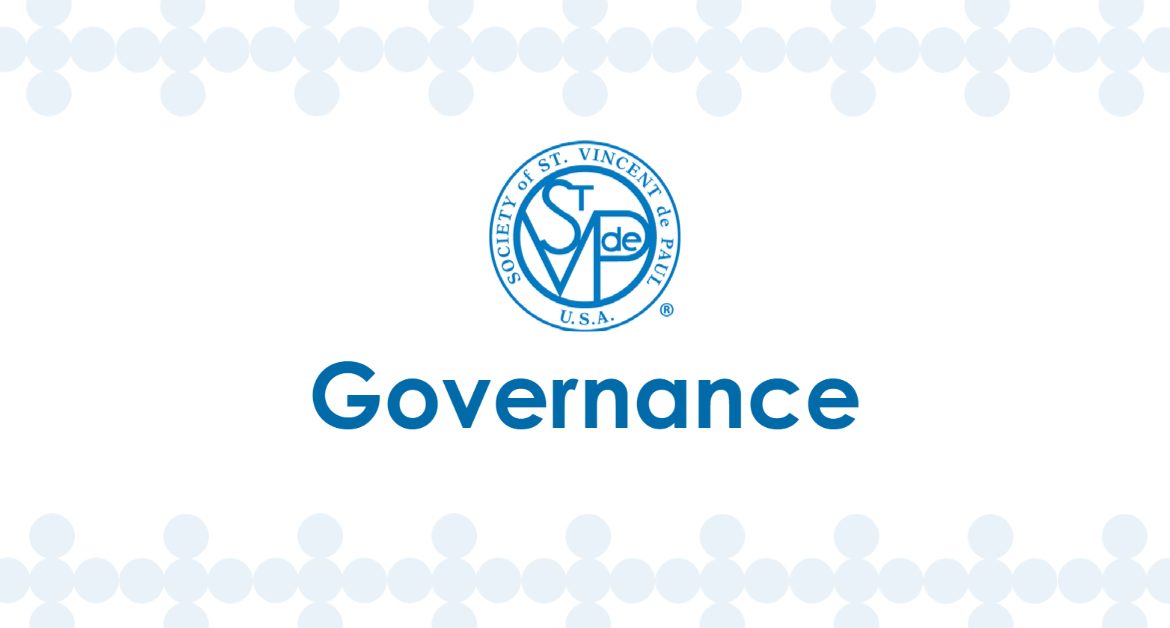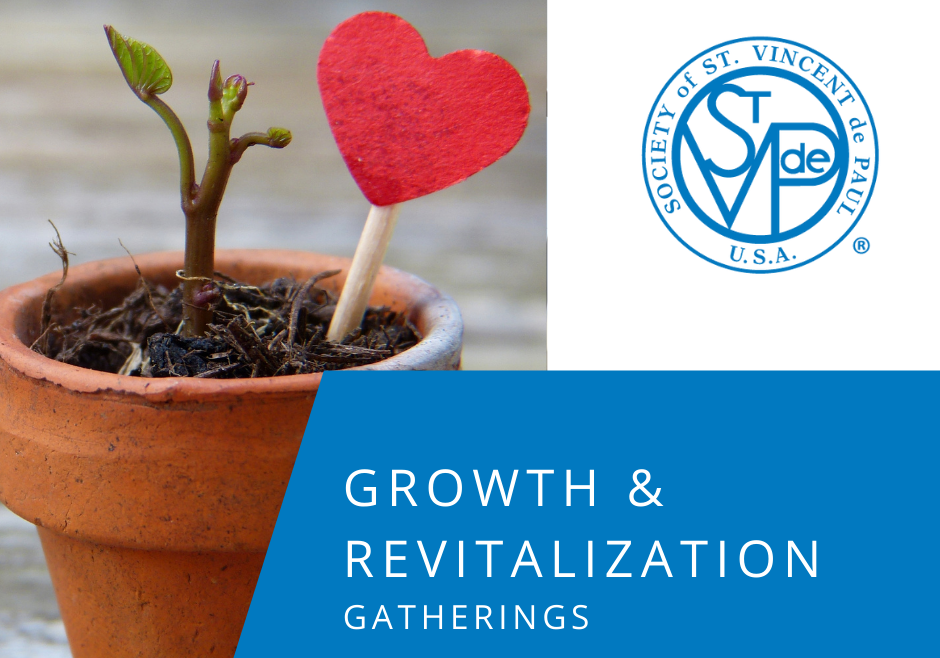(Excerpted from Vincentian Life: Conference)
B. Person-to-Person Activities
- Schedule Conference meetings on different days and at different hours to ensure that everyone, regardless of their work schedule, has an opportunity to attend Conference functions (for example, one meeting on a Wednesday evening, Saturday morning, or another on a Sunday after Mass).
- Mail the agenda of upcoming meetings to members who have been missing meetings. It’s a good reminder. To encourage better attendance, publish an annual calendar showing all meeting and other activity dates so people can plan in advance to attend and participate.
- Mail the minutes after the meeting to members who did not attend. For those who missed the meeting, that’s also a good reminder not to miss the next one.
- Parish Ministry Fairs. Almost every parish has one, so don’t pass on this opportunity to tell your story. Print simple sign-up forms (get new folks to sign up and come to a meeting; worry about getting detailed personal data later). Also print a short list of the work your Conference does and where it needs help.
- Parish Festival (are you a part of your parish?). Take part in the festival as a Conference. Distribute information on the work of the Society and your Conference. Provide sign-up forms.
- Personal Talks. This gives you the opportunity to recruit by letting the workers in other parish ministries understand what the Conference really does. Talk to the Sodality, Knights of Columbus, peace and justice council, Catholic Daughters of America, Right-to-Life Committee, etc. Cooperate with these groups on joint projects – distributing Rosaries, scheduling people for Exposition of the Blessed Sacrament, helping build a Habitat for Humanity home.
You don’t have to be a great speaker. Just tell them what you and your fellow Vincentians do. How many parishioners want to answer Christ’s call to serve the poor, but have never been asked? They may be embarrassed to come forward or maybe they just don’t know where to go to become involved. You can be their gateway to the Society. - Recruit, recruit, recruit! The strength of a Conference is in its members, so it must constantly be recruiting new members. Recruitment can usually be accomplished in four ways:
1) An Invitation to Serve This is a very successful program first introduced in Phoenix in the 1990’s and supported by the bishop and most pastors. After many successful recruitment campaigns, it was promoted and distributed as a nationwide program through the National Council.
2) Word of mouth – friend asking friend
3) Written material – passing out brochures, mailing newsletters
4) Presentations to groups of non-members
Ask people to join: If you don’t ask, you can’t get. The best recruiting is done by people who are currently active and enthusiastic. They give the best testimony of the benefits they receive from serving the poor.
Ask people again and again. Many will eventually join. Some may simply change their mind. Others’ lives and interests may change and they are finally ‘ready.’ A few may just be impressed by your sincerity and persistence. - Address the Congregation. Many Conference presidents have been addressing the congregation at the end of all Masses once a year with their pastor’s permission. An Invitation To Serve utilizes this arrangement and your bishop may be an active supporter of this approach. It gets your message to those who won’t read what you print and distribute, and satisfies those who want to “put a face” on an organization.
- Use sign-up tables on special Sundays, placed outside the church doors. Have literature, photographs, newsletters, sign-up forms, and a card preprinted with the day, time and place of your next two meetings. Good days for this technique include:
… the Sunday with the ‘Widow’s Mite’ Gospel
… the last Sunday in April (Ozanam Sunday) – Blessed Frederic Ozanam’s birthday and the anniversary of the founding of the Society is April 23
… the Sunday closest to Sept. 9 – Blessed Frederic Ozanam’s feast day
… the Sunday closest to Sept. 27 – St. Vincent de Paul’s feast day - Have a special Mass to celebrate these feast days. If there are Conferences in neighboring parishes consider joining together for the Mass. Schedule it at a time convenient for Father, and follow the Mass with coffee and refreshments or a simple pot luck supper afterwards. Invite all the clergy from the parishes involved to join the Conferences members for a short time afterwards.
C. Communicating Through Attitude
(Making people feel welcome)
We have all heard that “actions speak louder than words.” Truer words were never said. If you want your Conference to grow, your actions must match your words.
- Be a totally open organization. Exclude no one. Invite everyone. There are no closed meetings. There are no subcommittees that make all the decisions; however, only Active Members participate in the decision-making. We are totally democratic.
- Tell the parish what you want. The parish must know that you want new members. Say it verbally and in posters, fliers, newsletters and brochures. Too many groups (including church groups) are viewed as cliques or closed societies.
- Publicize your meetings well in advance. People live busy lives and have full calendars. Then provide last-minute reminder calls.
- Make it easy to join. Don’t make it complex – no applications, no forms – just a willingness to serve.
- Make people feel welcome at any meeting. When someone new shows up, welcome the person. Introduce all new people at each meeting and continue to introduce them for two or three meetings thereafter.
D. Focus Your Communications
(Protecting the future of your Conference)
Often your communications will focus on a specific target audience. You must modify your language, tactics and even media to appeal to different groups. One example is communicating with youth groups.
- The Society has no future if you do not bring in young people. Problem Conferences are usually those which have made no effort to bring in new members. Old members resist change. They don’t trust the judgment of newcomers, claiming they have no experience. Yet without a continuing flow of new blood, a Conference will become stagnant and die (or become ineffective).
- Expand your efforts through contacts with:
* Boy and Girl Scouts and similar youth organizations. Talk with their adult leaders about talking to the troops and packs. Devise activities where young people can be involved and make a contribution. One Conference even offers the St. Vincent Youth Service medal, borrowed from the New Orleans Diocesan Council.
* Teen, college, young adult and RCIA groups in the parish. Again, talk to the heads of these parish ministries. Talk to the groups separately, adjusting your talk to the interests, resources and age of each group.
* Teachers, nurses and counselors at your parish grammar school and regional Catholic high school. Ask to visit the classroom to give a 15-minute talk about St. Vincent or Blessed Frederic. Get the kids to take on a project, designing posters and fliers in their own graphics showing how Jesus expects us to treat the poor. Publicize the best in each age group. When the project is over, write thank you letters to the kids (not the teacher) in their own language. Consider, for example, sending first graders a letter from a poor child written with crayon.
E. Adapt to Changing Circumstances
- Prospects for membership are always changing. People die or move out of your parish while others move in; kids grow up and become adult members of the parish; parents finally get their kids out of the house or retire and now have time to volunteer; after a period of grieving, widows and widowers have time on their hands, a need for social interaction, and a desire to contribute and be involved.
This requires constant repetition of your message, often to people you might feel have heard it before. But at earlier times in their lives, their minds weren’t receptive and they failed to hear. For many, it’s a new message: working in the Conference provides an outlet for one’s energy, stability in one’s life, new friendships, and involvement with people who share their values and faith. - Recognize that lifestyles have changed. You can no longer expect to find members who fit the membership mold of 50 years ago. People’s lives and jobs have changed, their time and family are more fragmented. You must accept what people can contribute, even if it is less than what the Conference used to request or expect. There are no longer any “minimums” attached to membership.
If you want young mothers as members, you must accept less from them (in terms of time commitments) than from the retired individuals the Society traditionally recruited. Many people can’t give you two hours a week; they are lucky to give you two hours a month. - Don’t give up on former members. Send out a “come home” letter to every past member. You don’t know why they left, what or who offended them, what has changed in their lives. Now may be the moment when they are ready to come back. They may be just waiting to be asked.
F. Understand Efficacy
(Accomplishing your objective)
Efficacy is neither efficiency nor economy. Efficacy is attaining a desired result. Money is only a minor consideration in our ministry. You want people to do what’s right, not what’s the most economic or efficient. People are happier when they can ‘feel’ the result of their work – relate to the poor and their condition. Then you are more likely to accomplish your objective – gaining and keeping new members.
A mother who spends $3.79 to buy and donate a 32-oz. jar of peanut butter knows kids like peanut butter. She knows it’s a healthy, high-protein food. She knows that jar will make 17 sandwiches for hungry kids. She can now relate to how the mother of several poor children will feel when she receives it – even though she will never meet that poor mother or see her children. Even though you may be able to get a whole case of peanut butter from a food bank for just $3.50, don’t even think about asking her to give you the $3.79 instead. It would take the joy out of her gift. It would “de-personalize” her act. It would steal away her connection with that poor mother. Her gift of peanut butter enables her to “identify” with the needs of another woman. That’s efficacy.
Substituting the writing of a check for the personal service shown above would be efficient, cold and impersonal. The Society leans toward efficacious service.
BE TOLERANT AND UNDERSTANDING
Our church, our Society and undoubtedly our own Conferences are full of liberals, conservatives, radicals and Neanderthals. If we are to successfully work together to serve the poor, we must focus on what unites us rather than on what divides us.
You don’t have to change your party registration to join the Society, and no one can make you vote for someone or something you disagree with. You probably already have friends you disagree with on major topics, yet you go out to eat or drink together.
Love, respect, and tolerate each other. Rejoice in the fact that, despite our seeming differences, we are united in service to the poor.
Despite our own personal preferences, we must acknowledge that we never know what act or prayer or touch or liturgy helps turn a soul back to God. Bishop Fulton Sheen said there is a light bulb in every human being, waiting for the moment when Christ provides the energy, however small at first, to light the filament.
Do the work of the Society. Help light those filaments.


